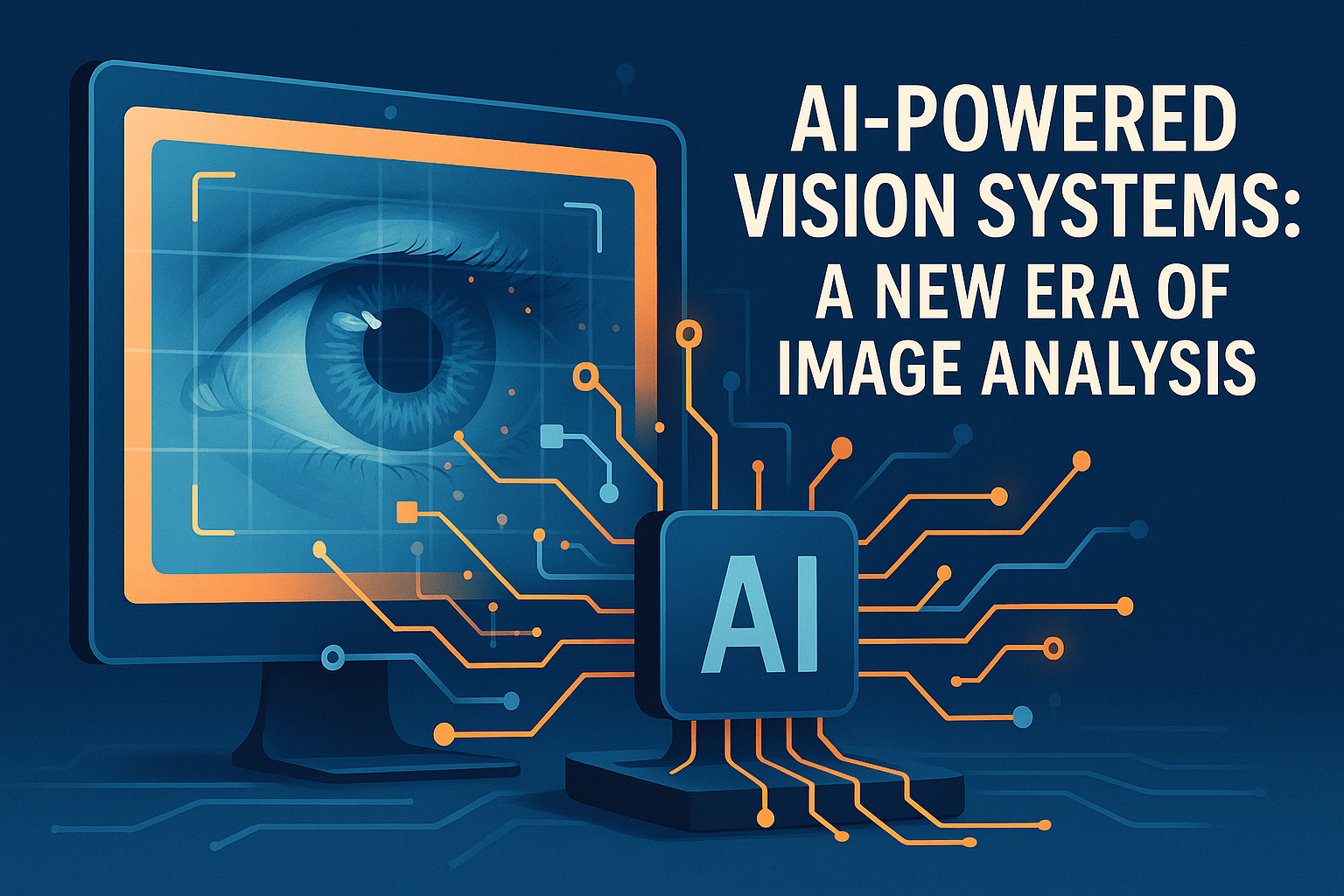
AI-Powered Vision Systems: A New Era of Image Analysis
Artificial Intelligence (AI) is transforming how machines perceive and understand the world. One of the most impactful applications of AI is in computer vision — enabling machines to analyze, interpret, and act upon visual data. This article explores AI-powered vision systems, their real-world applications, benefits, challenges, and why they’re driving the future of image analysis.
Whether you’re a developer, business owner, or tech enthusiast, understanding these systems is key to staying ahead in the digital age.
What Are AI-Powered Vision Systems?
AI-powered vision systems combine machine learning, neural networks, and advanced algorithms to analyze and interpret images or videos, mimicking human visual perception.
Key Components:
- Image Capture Devices: Cameras, drones, satellites, and sensors collect raw visual data.
- Processing Units: GPUs or specialized AI chips handle data-heavy tasks.
- Deep Learning Models: Convolutional Neural Networks (CNNs), Vision Transformers (ViTs), etc., power the understanding of images.
- Software Layer: Interfaces and APIs allow integration into broader applications or workflows.
How They Work:
- Image acquisition from sensors or cameras
- Preprocessing (e.g., noise reduction, normalization)
- Feature extraction (edges, colors, objects)
- Classification or segmentation using AI models
- Decision making based on insights
These systems continuously learn from new data, improving their accuracy over time — a hallmark of modern AI.
Why AI Vision Is Crucial Today
The demand for fast, reliable, and automated image analysis has skyrocketed across industries. AI vision meets this need by offering real-time insights, reducing human error, and scaling complex tasks.
Benefits of AI-Powered Image Analysis:
- 🚀 Speed: Process thousands of images in seconds
- 🧠 Intelligence: Recognize patterns that humans may miss
- 🎯 Accuracy: Achieve >95% accuracy in some medical imaging tasks
- 💰 Cost Efficiency: Reduce manual labor and operational costs
- 🔁 Scalability: Easily deploy across devices and locations
“AI-powered vision systems are not just an upgrade — they're a paradigm shift in how machines see and respond to the world.”
Real-World Applications and Use Cases
From smart cities to supply chains, AI vision is reshaping entire sectors. Here’s how:
Healthcare
- Medical Imaging: Detect tumors, fractures, and anomalies with high precision (e.g., radiology, dermatology)
- Surgical Assistance: Guide robotic tools with real-time visual feedback
Retail
- Smart Checkout: Computer vision enables cashier-less shopping (e.g., Amazon Go)
- Shelf Analytics: Monitor stock levels and optimize product placement
Manufacturing
- Quality Control: Detect defects in real time on production lines
- Predictive Maintenance: Spot wear and tear before breakdowns occur
Security and Surveillance
- Facial Recognition: Authenticate users or detect threats
- Behavioral Analysis: Identify suspicious activity in public spaces
Agriculture
- Crop Monitoring: Use drones with AI vision to assess plant health
- Livestock Tracking: Automate animal counting and movement tracking
Each use case brings enhanced efficiency, better decision-making, and smarter operations.
Challenges and Considerations
Despite rapid advancements, AI-powered vision systems face several hurdles:
Technical Challenges
- Data Dependency: Large, diverse, and labeled datasets are essential
- Bias and Fairness: Poor training data can lead to biased results
- Edge Deployment: Running AI models on low-power devices remains complex
Operational Risks
- Privacy Concerns: Facial recognition and surveillance raise ethical questions
- False Positives/Negatives: Mistakes in critical areas (e.g., healthcare) can be costly
- Integration Costs: Legacy systems often require expensive upgrades to support AI
Best Practice: Always validate AI models with real-world test data and continually monitor performance after deployment.
Conclusion: Unlocking the Power of Machine Vision
AI-powered vision systems are redefining what's possible in image analysis. From diagnosing diseases to optimizing retail and ensuring public safety, these systems offer unmatched precision, speed, and intelligence.
As this technology continues to evolve, expect deeper integration into everyday devices, better real-time processing on the edge, and more ethical use through transparent AI practices.
Have questions about implementing AI vision in your business? Contact AJ Group — we’d love to help.